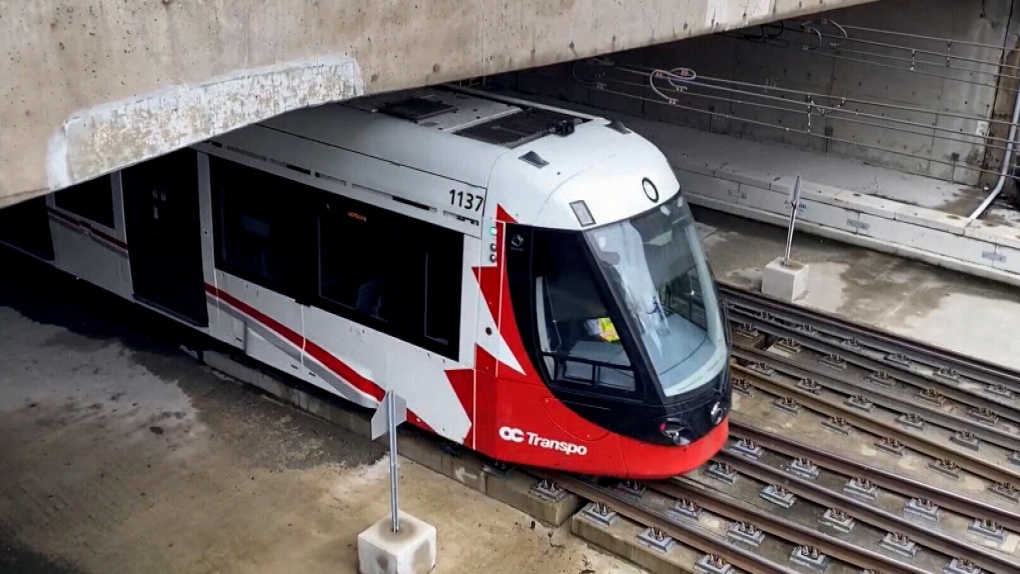
Alstom is hitting the brakes on redesigning the wheel hub assembly on Ottawa’s LRT vehicles, which was once billed as a “final fix” to a problem that has caused at least three shutdowns on the Confederation Line over the past three years.
A report for Friday’s special meeting of the Transit Commission and Light-Rail Transit Committee shows the train manufacturer believes a permanent fix can be achieved without a redesign, but the city does not accept that conclusion.
“Alstom has indicated that a Sustainable Solution can be achieved without a redesign and is not currently working on this initiative,” staff say. “The City has formally communicated the imperative for the re-design work to re-commence.”
Issues with the cartridge bearing assembly have resulted in three partial or full shutdowns of the nearly five-year-old LRT system since 2021, including a shutdown last summer after an issue was discovered with one wheel hub.
Alstom and Rideau Transit Group have implemented a short-term solution to the wheel hub assembly issue on the Citadis Spirit vehicles, with Alstom retrofitting the cartridge bearing assemblies with a nut-pinned cartridge that is intended to stop the wheel hub from loosening. Staff say half of the vehicles now have the pinned hub replacement, extending the life-span to 400,000 kilometres or five years from 60,000 kilometres.
Alstom has said the issues with the axle hub assembly on the LRT vehicles are due to the higher than expected lateral loads on the vehicle’s axles during operation.
“In Alstom’s opinion, the contributory factors leading to high lateral loads include wheel/rail interface issues such as wheel profile, rail profile, track and rail geometry, and coefficient of friction,” says the report.
However, staff say Rideau Transit Group has still not accepted Alstom’s root cause analysis, and continues to work with its own independent engineering firm to review Alstom’s report and produce a consolidated document.
Last July, officials with OC Transpo and Rideau Transit Group announced they were working with Alstom to redesign the axles and wheel hub assemblies on every vehicle. The announcement came after OC Transpo and RTG shutdown the full Confederation Line due to an issue with one wheel hub.
“This means that Ottawa will finally have a permanent fix to this bearing issue, which will help to ensure the long-term sustainability of Line 1,” Renee Amilcar, general manager of OC Transpo, told the media on July 24, 2023.
Rideau Transit Group and Rideau Transit Group have implemented several “containment measures” on the Confederation Line, including speed reductions on curves, replacing the cartridge bearing assemblies with the nut-pin, adjusting the restraining rails and installing top-of-rail friction modifiers to reduce the friction between wheels and railhead.
The report does say OC Transpo and Rideau Transit Group want permanent solutions to keep the Confederation Line moving.
“The City, RTG, and their external safety and engineering consultants continue to make progress on the development of additional mitigation measures that will provide a stable and resilient LRT service,” the report says.
“Ultimately, the City and RTG are working towards a sustainable solution that will eliminate the need for containment measures and the resumption of full service that achieves Project Agreement performance requirements.”
Alstom is also recommending Rideau Transit Group replace the rail on curves with a “higher strength material.” The report says the National Research Council visited Alstom’s Truck Centre for Excellence in France to discuss the root cause analysis failure issues, and is recommending, “high strength rail should be swapped in for the existing (rail)” in tight curves.
The Confederation Line will be partially shutdown in October, but no other information has been released.
“Automated gauge face lubrication, top-of-rail friction modifiers, restraining rail resetting, railhead reprofiling, nut-pinning and ballast strengthening are all improvements that will enhance reliability of the system,” says the report for the Friday, May 31 committee meeting.
“Further work will occur during a partial shutdown in October 2024 including a grinding program to re-establish the rail head profile and track ballast strengthening.”